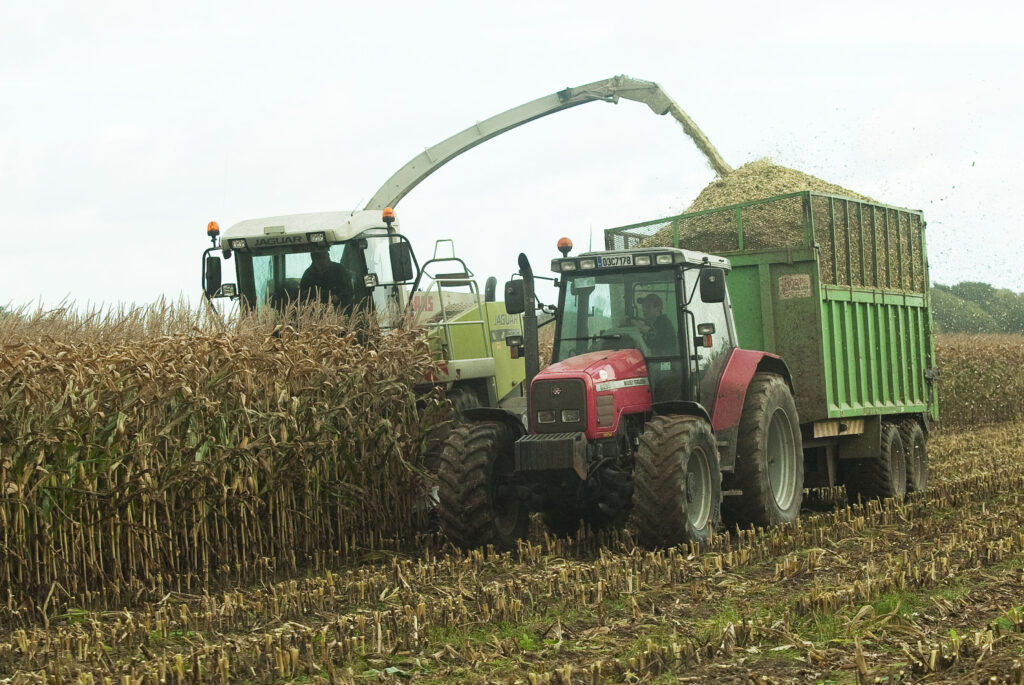Maize silage is a high-energy and starch forage that is often used to improve milk production and maintain condition during winter milk production.
Feeding maize silage to cows will increase their dry matter intake (DMI) compared to cows just fed grass silage.
The extra DMI means that cows have a higher energy intake, which should lead to improved performance.
Maize harvesting
The weather for the majority of September has been good, with ground conditions in most parts of the country holding up well.
As we head into October the weather has become a little more unsettled, with most of the country experiencing wet and windy conditions.
Harvesting a maize crop can be challenging to say the least, in a year with a wet back end.
With ground conditions still reasonable, some farmers have begun the harvesting of their maize crops, and most will being harvesting maize crops in the coming days and weeks.
Once you have determineed that the crop is at the optimum dry matter (DM) content of 30-33%, you should harvest the crop promptly.
You should target a chopping height of 1.5-2cm and avoid cutting plants too low to the ground.

Ensiling
Like a grass silage, you should fill the pit quickly and consolidate the crop well. Once the pit has been rolled well, it should be completely sealed to allow for anaerobic fermentation to take place.
Ensure the sheet used to cover the pit is weighed down with tyres, sand bags or whatever you use on the pit.
The digestibility and starch content of maize silage improves with time in the clamp.
Where possible, a maize crop should be left to ferment for at least one month before feeding. This is to allow the pH and feed quality of the crop to stabilise.
But unlike grass silage, maize silage can be fed to cows straight away if required.
Like your grass silage pit you should keep the face of the pit tidy. Only open a small area of the pit at a time to prevent spoilage – maize silage usually attracts birds.
Along with making a mess of the yard, birds could increase the amount of spoilage from the crop.
Protein
The crude protein content of maize silage is quite low, with a typical content of 9-10%.
Therefore, an additional source of protein may be required. To ensure that cows are receiving a balanced diet you should develop a total mixed ration (TMR) for your herd.
This should be developed with the assistance of a ruminant nutritionist, using the feeds available on the farm, along with some purchased-in feeds/concentrates.
